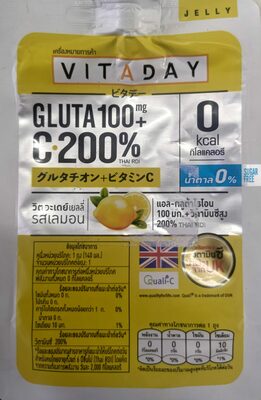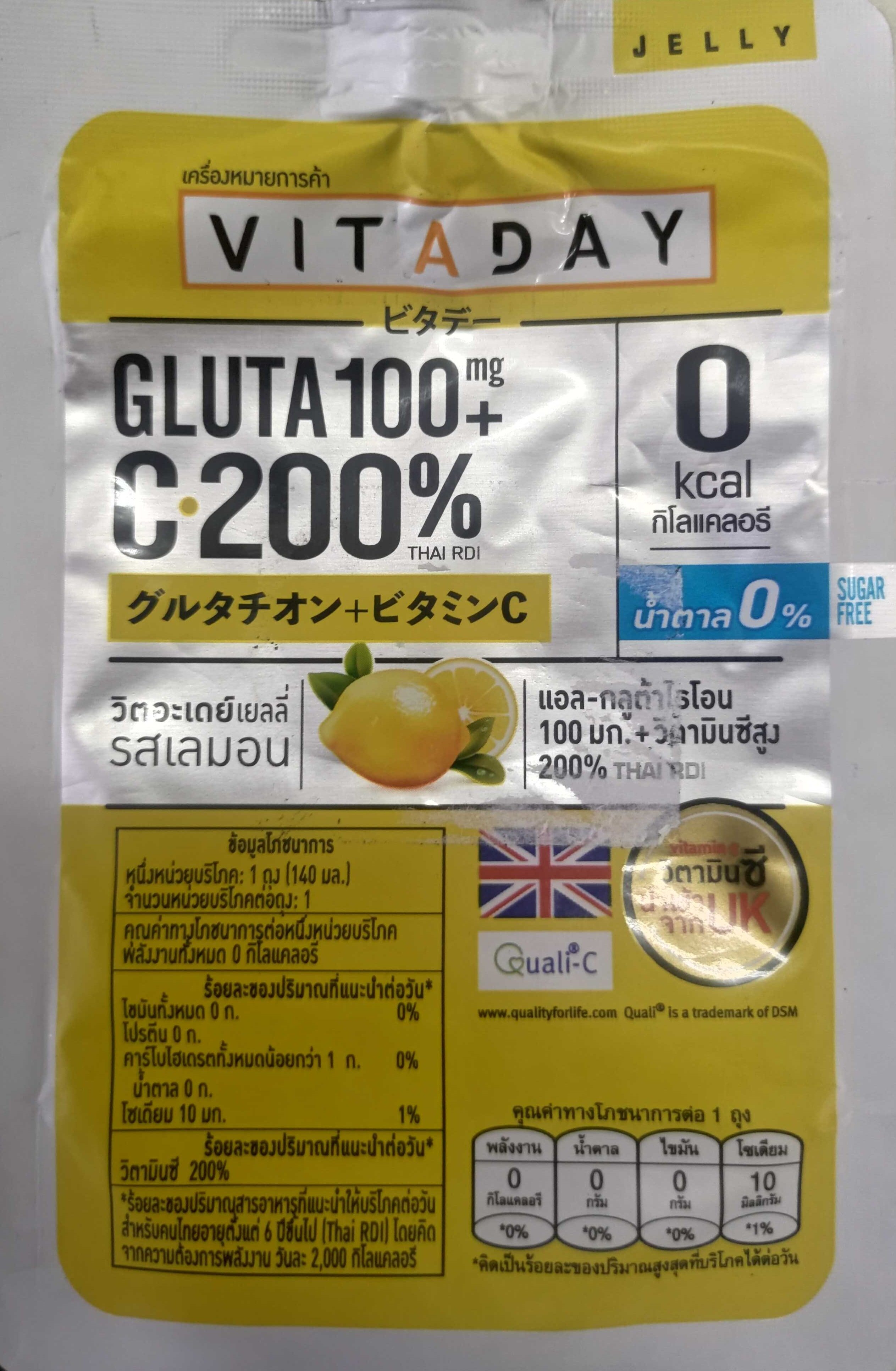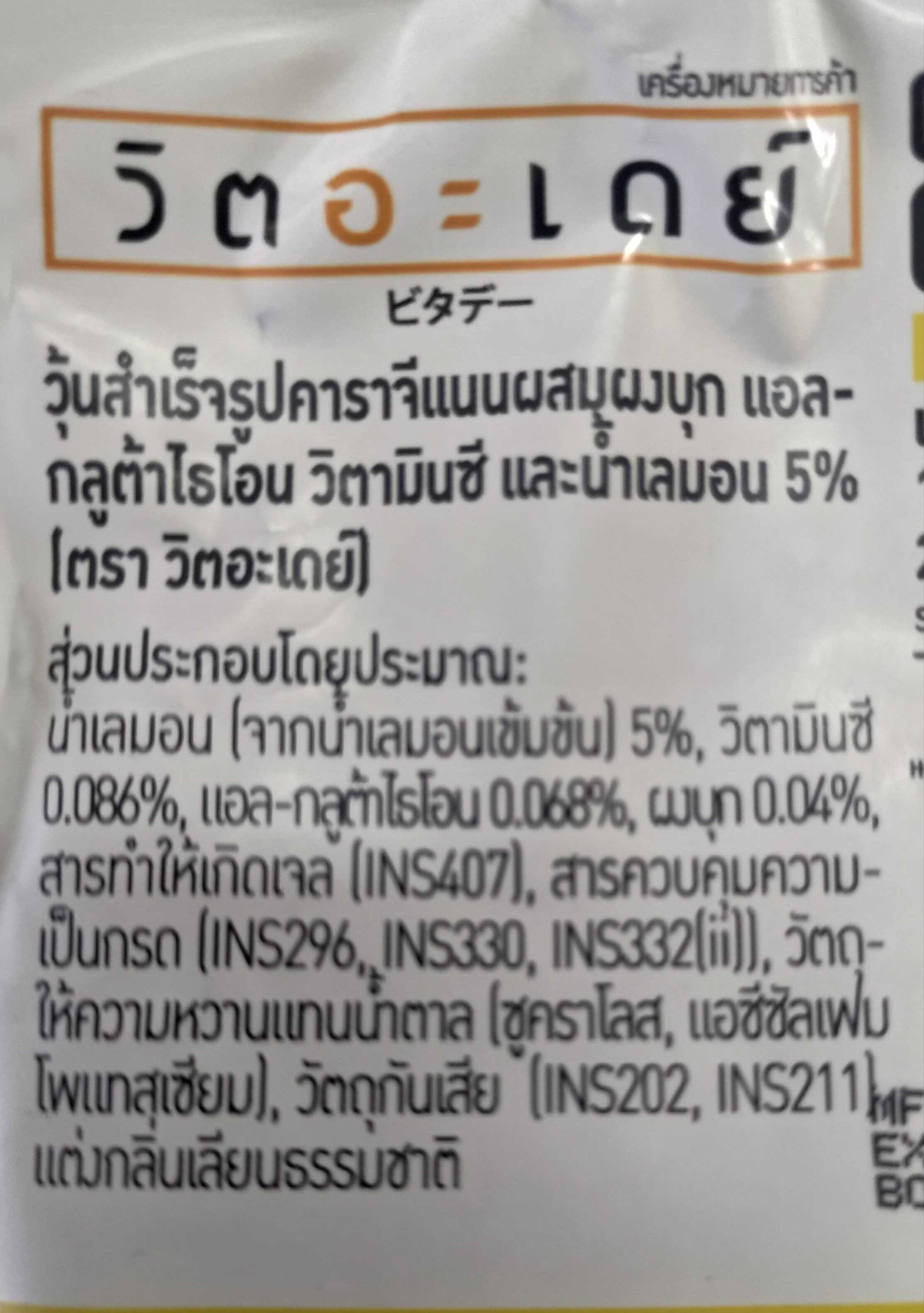Vitamin C Jelly Lemon - Vitaday - 140 mL
This product page is not complete. You can help to complete it by editing it and adding more data from the photos we have, or by taking more photos using the app for Android or iPhone/iPad. Thank you!
×
Barcode: 8859015701738 (EAN / EAN-13)
Quantity: 140 mL
Brands: Vitaday
Categories: en:Dietary supplements, en:Vitamins
Origin of ingredients: ថៃ
Link to the product page on the official site of the producer: https://generalbeverage.co.th/vitaday/
Stores: 7-Eleven, Aeon Mall, Aeon Max ValuExpress
Country: ព្រះរាជាណាចក្រកម្ពុជា, ថៃ









